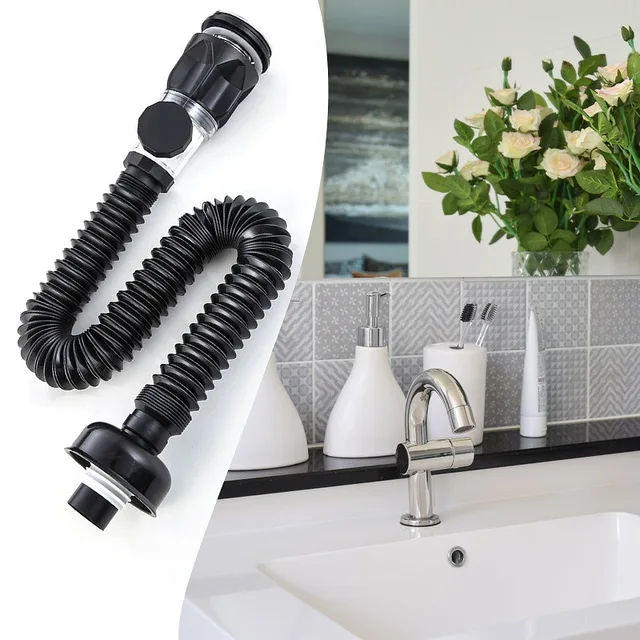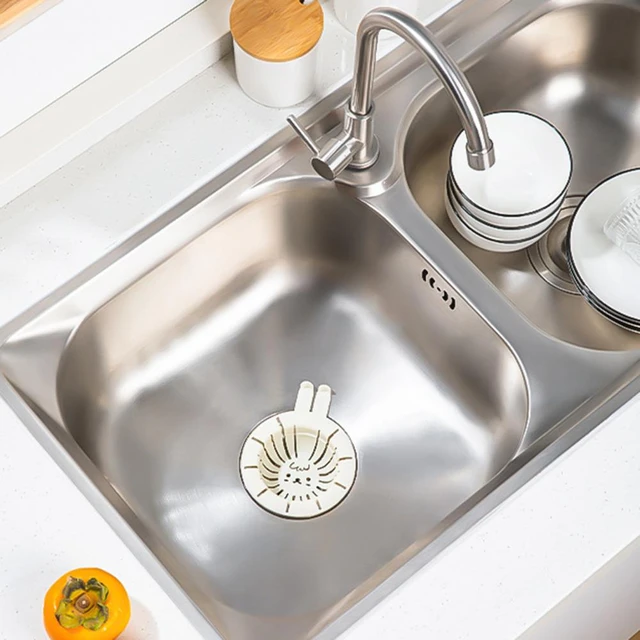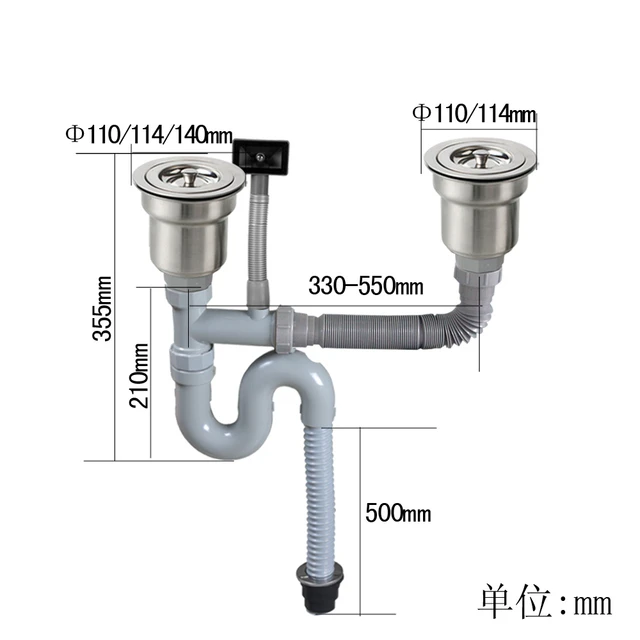 Introduction:
Introduction:
How to install kitchen sink drain?
Installing a kitchen sink drain is a straightforward task that can be accomplished with basic tools and some simple steps. Proper installation of the drain ensures effective water flow and prevents leaks and clogs. In this comprehensive guide, we will provide a step-by-step walkthrough of the process of installing a kitchen sink drain. By following these easy instructions, you can confidently install a new drain or replace an existing one, enhancing the functionality and aesthetics of your kitchen sink.
Introduction to Installing a Kitchen Sink Drain
How to install kitchen sink drain?
Installing a kitchen sink drain involves connecting the sink to the plumbing system and ensuring proper drainage.
A. Significance of Proper Installation: A well-installed sink drain promotes efficient water flow, prevents clogs, and minimizes the risk of leaks and water damage.
B. Basic Tools Required: You will need a few basic tools, including an adjustable wrench, plumber’s putty, a pipe cutter or hacksaw, and plumber’s tape.
 Some common materials used for kitchen sink drains:
Some common materials used for kitchen sink drains:
Kitchen sink drains are typically made from various materials, each offering different characteristics in terms of durability, corrosion resistance, and aesthetics. Here are some common materials used for kitchen sink drains:
Stainless Steel:
It is a popular choice for kitchen sink drains due to its durability, corrosion resistance, and easy maintenance. Stainless steel drains are resistant to staining, rust, and damage from household chemicals.
Brass:
Brass kitchen sink drains are known for their enhanced durability and resistance to corrosion. They offer a classic and elegant look and are often used in high-end or traditional kitchen designs.
Plastic:
Plastic drains, typically made from PVC (polyvinyl chloride), are a cost-effective option for kitchen sinks. They are lightweight and resistant to corrosion. However, plastic drains may not be as durable as metal options and may require replacement over time.
Composite:
Composite kitchen sink drains are made from a blend of materials, such as fiberglass and resin. These drains offer excellent durability, resistance to staining, and easy cleaning.
When selecting a kitchen sink drain material, consider your budget, desired aesthetics, and functional requirements. Stainless steel and brass are often preferred for their durability and resistance to corrosion, while plastic and composite options may be more budget-friendly. Ultimately, choose a material that suits your specific needs and preferences.
 Removing the Old Drain
Removing the Old Drain
Before installing a new drain, it is necessary to remove the old one.
A. Clear the Workspace: Remove any items under the sink and ensure the area is clean and accessible for the installation process.
B. Loosen the Slip Nuts: Using an adjustable wrench, loosen the slip nuts that secure the drain trap and any other connected pipes. Carefully disconnect the drain pipes from the main plumbing system.
Preparation for Installing the New Drain
Preparing the sink and new drain components ensures a smooth installation process.
A. Clean the Sink Opening: Remove any debris or old putty from the sink opening using a putty knife. Clean the area with a mild detergent and water solution.
B. Apply Plumber’s Putty: Roll a small amount of plumber’s putty between your hands to form a rope-like shape. Place the putty around the flange of the new drain assembly.
Installing the New Drain
Installing the new drain involves connecting the various components properly.
A. Position the Drain Flange: Insert the drain flange into the sink opening, ensuring it sits flush with the sink surface. Apply gentle pressure to secure it in place.
B. Install the Rubber Gasket and Mounting Hardware: Place the rubber gasket over the drain flange from underneath the sink. Insert the mounting hardware provided with the new drain assembly and tighten it securely using an adjustable wrench.
C. Attach the Drain Pipe: Connect the drain pipe to the bottom of the drain flange, ensuring a tight fit. Tighten the slip nut securely using an adjustable wrench.
Connecting to the Plumbing System
Connecting the new drain to the plumbing system ensures proper water flow and drainage.
A. Measure and Cut the Pipe: Measure the distance between the drain pipe and the main plumbing system. Use a pipe cutter or hacksaw to cut a new section of pipe to the appropriate length.
B. Attach the New Pipe: Apply plumber’s tape to the threads of the new pipe section. Attach one end of the new pipe to the drain system and the other end to the main plumbing system using slip nuts and washers. Tighten the slip nuts securely with an adjustable wrench.
 Checking for Leaks and Proper Functionality
Checking for Leaks and Proper Functionality
After installation, it is essential to check for leaks and ensure proper functionality.
A. Turn on the Water: Slowly turn on the water supply and check for any signs of leakage around the drain and pipe connections. Tighten any loose connections if necessary.
B. Test the Drain: Fill the sink with water and observe the water flow and drainage. If the water drains properly without any backup or slow drainage, the installation is successful.
Finalizing the Installation
Ensure the installation is secured and clean up the area.
A. Check and Tighten Connections: Verify that all connections are securely tightened and that there are no leaks.
B. Clean and Organize: Clean up any debris or excess putty from the sink and surrounding areas. Organize your tools and dispose of any waste materials properly.
Maintenance and Care
Proper maintenance and care of the kitchen sink drain ensure optimal functionality and longevity.
A. Regular Cleaning:
Routinely clean the drain and sink to prevent buildup and clogs. Use a mixture of baking soda and vinegar or a commercial drain cleaner to keep the drain clear.
B. Address Issues Promptly:
If you encounter any leaks or drainage problems, address them promptly to prevent further damage or complications.
Some key precautionary measures:
How to install kitchen sink drain?
When installing a kitchen sink drain, there are several important considerations to keep in mind. Here are some key precautionary measures:
Read the instructions:
Carefully read the manufacturer’s instructions that accompany the kitchen sink drain. Follow the steps and recommendations provided to ensure proper installation.
Choose the right size:
Ensure that the size of the drain matches the size of your sink and its corresponding drain hole. Measure the diameter of the drain opening to select the correct size for a proper fit.
Use plumber’s putty or silicone sealant:
Apply plumber’s putty or silicone sealant around the drain flange or rim before installing it. This will create a watertight seal between the sink and the drain, preventing any leaks.
Tighten fittings properly:
Use the appropriate tools, such as a wrench or pliers, to securely tighten the fittings. Avoid overtightening, as this may cause damage to the drain or sink.
Install a P-trap:
Ensure that a P-trap, a U-shaped pipe, is installed under the sink to prevent sewage gases from entering the kitchen. The P-trap also helps to trap debris, preventing clogs in the drainage system.
Check for leaks:
After installation, carefully inspect the drain for any leaks. Run water into the sink and check for any signs of leakage around the drain and fittings. If any leaks are detected, make the necessary adjustments or seek professional assistance to resolve the issue.
Follow local plumbing codes:
Familiarize yourself with local plumbing codes and regulations. Adhere to these guidelines to ensure compliance with safety and plumbing standards.
If you are uncertain about the installation process, it is always advisable to consult a professional plumber for assistance or guidance to ensure a proper and secure installation of your kitchen sink drain.
 Conclusion
Conclusion
How to install kitchen sink drain?
Installing a kitchen sink drain is a manageable task that can be performed with basic tools and following the provided instructions. By properly installing a new drain or replacing an existing one, you can ensure efficient water flow, prevent leaks and clogs, and maintain the functionality and hygiene of your kitchen sink. Remember to use the appropriate tools, apply plumber’s putty, and securely tighten all connections. Regular maintenance and care will prolong the lifespan of the drain and ensure optimal performance. Enjoy a functional and hassle-free kitchen sink with a properly installed drain.



